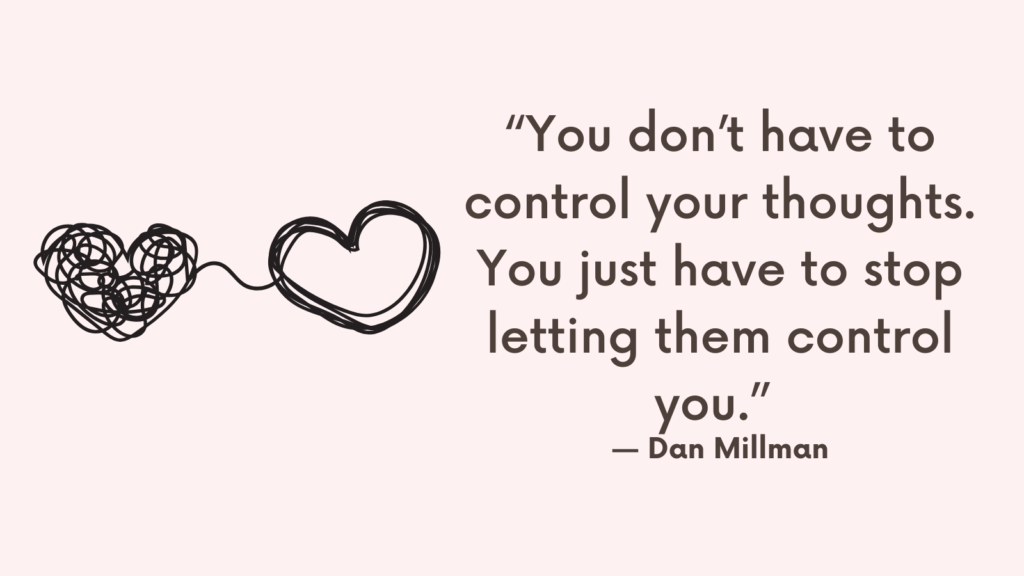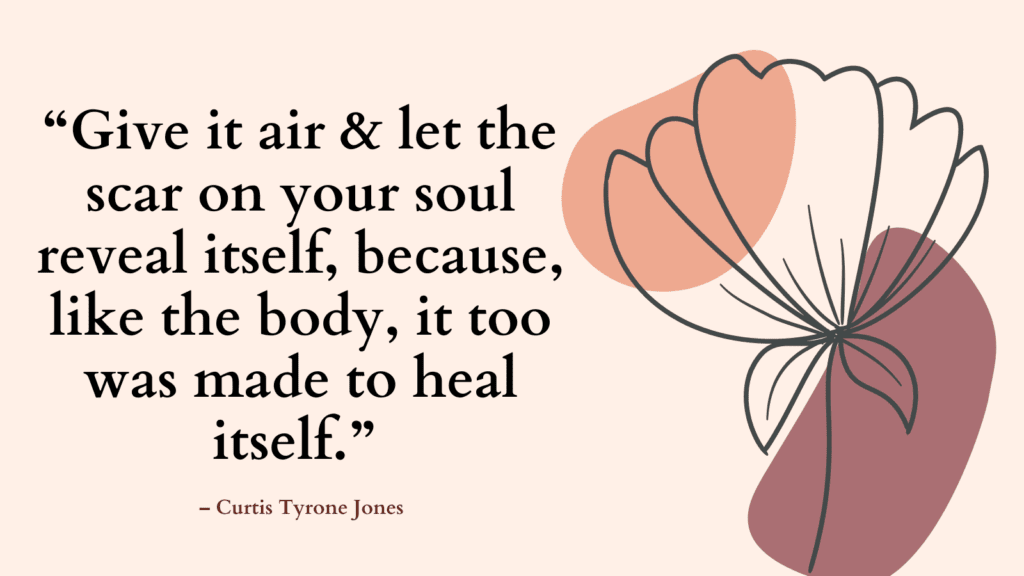Today, you’re going to learn all about CBT for phobia and how to get rid of a phobia using Cognitive-Behavioral Therapy (CBT).
Fear is a natural biological reaction in humans.
In fact, it is due to fear that human beings survived throughout history.
Fear has become essential in our survival and evolution as a species, even when we don’t have to fight wild beasts to survive anymore.
However, while it’s normal to feel fear towards certain objects or situations, things can get out of hand and fear can turn into a phobia.
- When Does A Fear Become A Phobia?
- Phobia Meaning
- Cognitive Behavioral Therapy (CBT)
- CBT For Phobias: How To Get Rid Of A Phobia Using CBT?
- 1. Arachnophobia (fear of spiders and arachnids)
- 2. Acrophobia (fear of heights)
- 3. Aerophobia (fear of flying)
- 4. Cynophobia (fear of dogs)
- 5. Astraphobia (fear of thunder and lightning)
- 6. Trypanophobia (fear of needles and injections)
- 7. Mysophobia (fear of dirt and germs)
- List of All Types of Phobias (A to Z)
- Conclusion
When Does A Fear Become A Phobia?
A fear becomes a phobia when the mental and physical response to something that’s unlikely to cause any harm becomes irrational and so debilitating that it interferes with everyday life.
Phobia Meaning
Phobias are an irrational fear response to something that’s unlikely to cause any harm.
It usually develops during childhood and persists into adulthood.
Although, the person suffering from phobia knows that their fear is irrational and that the stimulus poses no actual threat, their reasoning, isn’t helping them overcome their phobias.
For some people, their phobias aren’t severe enough to require treatment especially if they can easily avoid their feared stimulus.
However, in some other cases, phobias can impair the person’s functioning and well-being. (*)
Related: How To Break The Cycle Of Performance Anxiety?
Cognitive Behavioral Therapy (CBT)
Cognitive behavioral therapy – or CBT rests on the belief that how we think influences our feelings and behaviors, and that by correcting or changing distorted beliefs we can achieve more balanced feelings and helpful behaviors. (*)
Related: Top 10 Practical CBT Exercises For Generalized Anxiety Disorder Relief
CBT For Phobias: How To Get Rid Of A Phobia Using CBT?
Can Phobia Be Treated?
The most common clinical treatment for phobias are; antidepressants, anxiolytics, beta-blockers, psychodynamic therapy, behavioral therapy, and Cognitive-Behavioral Therapy (CBT). (*)
CBT helps individuals better manage, minimize, and sometimes eliminate their fears and phobias.
Since specific phobias are deeply rooted in a person’s dysfunctional beliefs, CBT works best, because it focuses on changing thoughts patterns.
What Phobia Do I Have?
Some of the most common kinds of specific phobias that CBT can treat are the following:
- Arachnophobia (fear of spiders and arachnids)
- Acrophobia (fear of heights)
- Aerophobia (fear of flying)
- Cynophobia (fear of dogs)
- Astraphobia (fear of thunder and lightning)
- Trypanophobia (fear of needles and injections)
- Mysophobia (fear of dirt and germs)
Related: High Functioning Anxiety Test (& How To Support Anxiety Recovery)
1. Arachnophobia (fear of spiders and arachnids)
Arachnophobia is the fear of spiders and arachnids.
This phobia is one of the most common kinds of specific phobias.
While it is understandable why many of us would be afraid of spiders and scorpions considering that many of them are venomous.
But individuals with Arachnophobia experience a more intense fear than other people. The mere sight or even image of a spider can be enough to paralyze them with terror.
Arachnophobia is unreasonable because only a minority of arachnid species is actually venomous and it inhibits the wilderness or the desert. Yet individuals with arachnophobia freeze even when they find a harmless domestic spider.
CBT and Phobia of Spiders
Exposure and desensitization therapy is a CBT technique of choice in resolving Arachnophobia.
Exposure and Desensitization Therapy
Exposure and desensitization therapy involves the systematic exposure of the individual to their feared stimulus until they learn to cope with their distress in a more functional way and feel less afraid about it.
Work through your fear slowly in a series of gradual exposure exercises:
1. Try to think about a spider and resist your usual fear response, such as screaming, tensing up, crying, etc.
2. If you find it hard to do, try to calm yourself with meditation and repeating positive affirmations, such as “I’m safe,” or “It’s just a thought.”
3. Do this for at least 5 minutes.
Repeat the process the following days, and increase your time of exposure each time, until you feel comfortable enough to move on to looking at a picture of a spider.
Once you’ve done that, try using VR technology to stimulate a spider, or skip to being in the same room as a spider.
Avoid any fear responses and simply calm yourself and talk yourself through it. Rationalize your fear until you convince yourself that there’s nothing to fear.
Related: 30 Day Social Anxiety Challenge That Will Help You Feel More Confident
2. Acrophobia (fear of heights)
Acrophobia is an intense fear of heights.
This kind of phobia can be very disruptive for individuals who have to face heights often, such as working in a high-rise building, looking out on their apartment window, riding a train over a tall bridge, etc.
Cognitive-Behavioral Therapy (CBT) is very effective in Acrophobia. By confronting a person’s deep-seated fears and changing their way of thinking about heights, CBT helps people suffering from Acrophobia control their fear-inducing thought patterns.
Acrophobia Treatment
1. Relax and clear your head by listening to some calming music or meditate.
2. Imagine yourself in a high place, like a mountain top overlooking a beautiful view. It’s important to stay calm while doing this. If you find yourself getting anxious, calm yourself down and talk yourself through it.
3. Repeat positive affirmation to yourself, like “I’m safe,” or, “I feel calm, it’s okay for me to be around heights.”
4. Once you feel comfortable enough, try going even higher.
5. When you feel secure enough, try applying it in real life. Imagine yourself looking down an apartment window, or riding an elevator while enjoying the view.
If you start to panic, take deep relaxing breaths and relax your muscles until you calm down before continuing with the exercise.
Related: How To Stop Self-Critical Thoughts Using These Top 10 Techniques
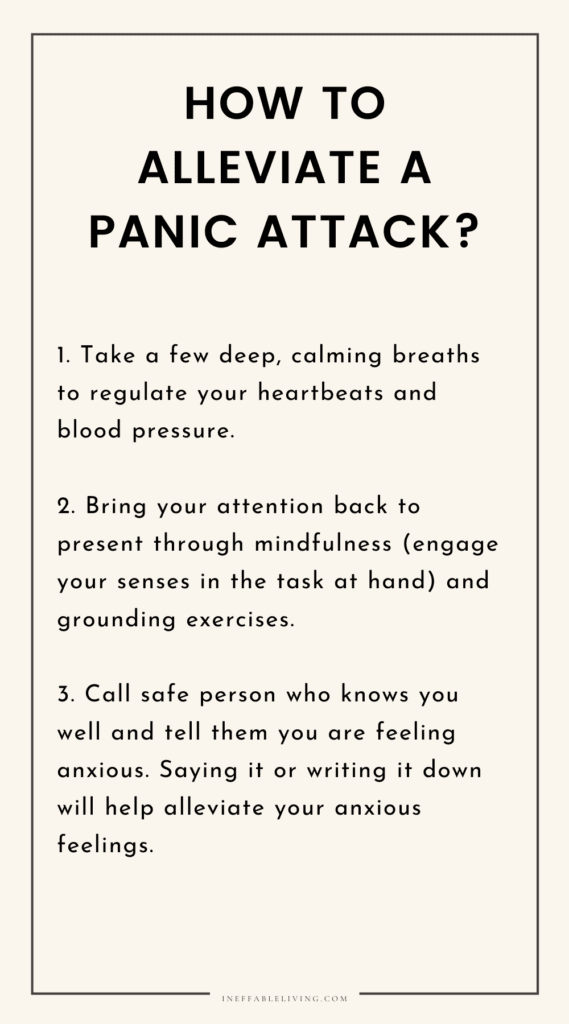
3. Aerophobia (fear of flying)
Aerophobia is an extreme fear of flying.
This phobia often keeps people from riding planes or traveling which causes them to sometimes miss out on career opportunities or even amazing vacations.
Cognitive-Behavioral Therapy (CBT) can be an effective solution to Aerophobia. CBT helps individuals unlearn their maladaptive responses to heights
CBT and Aerophobia
Exposure and Desensitization Therapy
“Exposure and Desensitization Therapy” explained above can be a great CBT technique that will help you unlearn your maladaptive responses to heights.
Socratic Questioning
Another CBT technique you can use to overcome your Aerophobia is called “Socratic Questioning”. This technique helps you evaluate how accurate and helpful your fears actually are.
1. Start by specifying what you feel or believe like stating “I am afraid of being in planes,” or, “I am afraid of flying.”
2. Challenge that belief by asking “why?” and answer truthfully. Don’t settle for “I don’t know,” or, “Just because.” Get to the real reason. This could be worrying that a crash might happen, or turbulence might happen, etc.
3. Rationalize your fear, like saying “Statistically speaking, the odds of being in a plane crash is 1 in 11 million,” or, “My friends fly all the time, nothing bad happened to them.”
Once you understand that your fears aren’t justified, it will be easier for you to rid planes and fly, and the more you do, the less nervous you’ll be.
Related: Journal Prompts For Anxiety (+FREE Anxiety Worksheets)
4. Cynophobia (fear of dogs)
Cynophobia is a severe fear of dogs.
This phobia is particularly difficult to leave without treatment since you probably know a lot of people who have pet dogs and are going to meet more than a few dogs in the street and other public spaces.
This can keep you from functioning well in your day-to-day life, prevent you from walking down the street or going to certain places, and spending time with certain people who own pet dogs.
While some cases of Cynophobia develop from a traumatic early experience of being bitten or chased by a dog, studies show that the majority of individuals with Cynophobia have never even had any direct encounters with a dog at all.
Experts believe that Cynophobia is rooted in individuals’ negative thinking and misconceptions regarding dogs and the actual danger they pose.
This is why CBT is the most recommended form of psychotherapy for treating Cynophobia.
Dog Phobia Treatment
Exposure and Desensitization Therapy
Like the other phobias, Cynophobia is commonly treated with exposure and desensitization therapy.
1. Relax yourself and take deep calming breaths.
2. Start thinking about dogs. Don’t move on to the next step unless you feel comfortable thinking about dogs without fear. If you find yourself starting to panic, calm yourself down and talk yourself through it.
3. Imagine a dog – its paws, its fur, its bark, etc.
4. Once you feel comfortable enough, move on to looking at pictures of dogs while remaining calm.
5. When you’re ready and comfortable enough looking at pictures of dogs, go to a pet shop and look at their dogs.
6. The final step is to pet a dog or at least going near it without feeling afraid.
Related: Best 10 Intrusive Thoughts Books
5. Astraphobia (fear of thunder and lightning)
Astraphobia is the extreme fear of thunder and lightning.
This phobia can be particularly stressful especially in times of stormy weather. In some cases, even a darkening sky or light rain can be enough to trigger panic in individuals suffering from Astraphobia.
Individuals with Astraphobia can become obsessed with the weather wasting a lot of their time and energy keeping track of it every day.
This phobia can also prevent them from leaving their homes at the slightest sign of rain or make them hide inside their closet as soon as they hear thunder or see flashes of lightning.
Some of them are so convinced that they’ll get struck by lightning if they left their homes in times of bad weather.
CBT and Astraphobia
If this is your case, you can treat your Astraphobia with CBT by doing the following:
1. Become aware of your fear responses. Start noticing when you start to feel anxious. Pay attention to symptoms like fast heartbeat, heavy breathing, muscle tension, etc.
2. Manage this anxiety by using relaxation techniques like yoga, meditation, breathing exercises, etc.
3. Let your emotions wash over you and detach yourself from them. Reassure yourself that you’re safe and that no harm could come to you.
Related: Best 10 Books For Overthinking And Anxiety
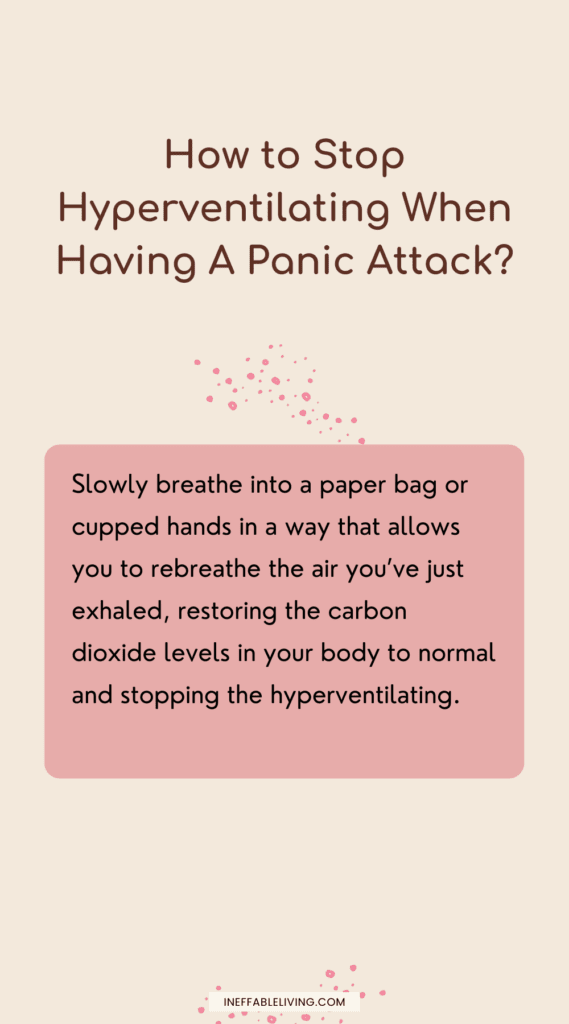
6. Trypanophobia (fear of needles and injections)
Trypanophobia is the extreme fear of needles and injections.
This phobia is typical for children and should diminish as they mature. However, some people still become paralyzed at the sight of needles.
Most individuals with Trypanophobia wrongly believe that they don’t need to treat their phobia and could simply avoid doctors, hospitals, or any medical procedures.
This can lead to neglecting personal health and other health problems.
Some people have milder Trypanophobia and are able to get injections, but they would still get extremely anxious and worried, and sometimes even pass out or experience a panic attack.
Needle Phobia Treatment
Exposure and Desensitization Therapy
As with the other phobias, exposure and desensitization therapy can help you become more comfortable around needles and overcome your Trypanophobia.
Mindfulness Training
Mindfulness training is a cognitive strategy that helps you bring attention to the present moment. It stops you from overthinking and becoming overwhelmed with your fears.
1. Find a safe, quiet place for you to relax in.
2. Close your eyes and focus on your breathing.
3. You can repeat positive affirmations to calm yourself further, such as “I am brave,” or “I am fearless.”
4. Calm yourself by focusing on the stillness of your surroundings and listening to your heartbeat.
5. Identify your emotions when you think about being injected.
6. Assess these emotions objectively. Are they justified?
Seeing for yourself that your fear is irrational will help you regain control over your thoughts, feelings, and behavior and help you overcome your Trypanophobia.
Related: What Causes Cognitive Distortions? (+Top 10 Common Cognitive Distortions & How To Challenge Them)
7. Mysophobia (fear of dirt and germs)
Mysophobia is the extreme fear of dirt and germs.
This phobia is characterized by an obsessive fear of contamination – by illnesses, body fluids, bacteria, or dirt.
Cognitive-Behavioral Therapy (CBT) is really effective in treating Mysophobia since the problem is rooted is the individual’s misconception related to the danger a feared stimulus poses.
CBT and Mysophobia
Exposure and sensitization therapy, Socratic questioning, psychoeducation, and mindfulness training are common CBT techniques that help with Mysophobia.
Another useful technique is Eye Movement Desensitization and Reprocessing (EMDR).
Eye Movement Desensitization and Reprocessing (EMDR).
EMDR is specially designed to treat distress caused by a certain memory. It is particularly effective if your phobia is rooted in a traumatic experience from the past.
EMDR helps you work through your trauma and recondition your response to the feared stimulus.
The following is an EMDR technique called the “butterfly hug”, which aims to your mind to associate the feared stimulus with calm and positive feelings.
1. The first step is to recall the traumatic event that causes the Mysophobia, your most painful memory regarding your phobia, and your most recent memory of it.
2. Visualize yourself in the future and picture yourself interacting with the germs or bacteria in non-fearful way.
3. Picture yourself in that same scenario, but this time, allow yourself to feel afraid.
4. Focus on your feelings and slowly put your hand on your upper forearms and give yourself a hug.
5. In your mind, go to your happy place while gently tap your shoulder to calm yourself down until your anxiety subsides.
Related: Emetophobia Quiz (Vomit Phobia)
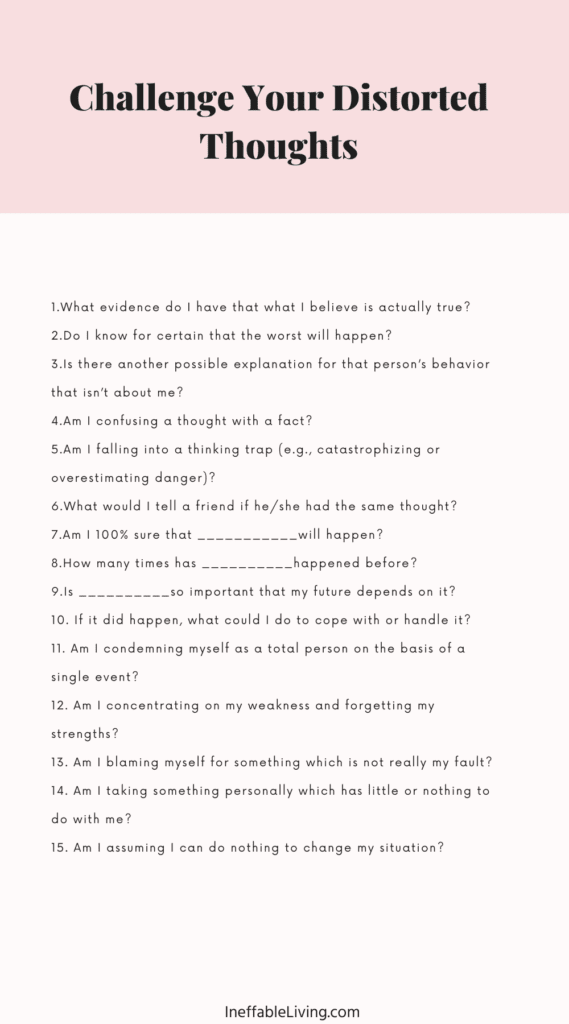
List of All Types of Phobias (A to Z)
| A | |
|---|---|
| achluophobia | fear of darkness |
| acrophobia | fear of heights |
| aerophobia | fear of flying |
| algophobia | fear of pain |
| alektorophobia | fear of chickens |
| agoraphobia | fear of public spaces or crowds |
| aichmophobia | fear of needles or pointed objects |
| ailurophobia | fear of cats |
| amaxophobia | fear of riding in a car |
| androphobia | fear of men |
| anginophobia | fear of angina or choking |
| anthophobia | fear of flowers |
| anthropophobia | fear of people or society |
| aphenphosmphobia | fear of being touched |
| arachnophobia | fear of spiders |
| arithmophobia | fear of numbers |
| astraphobia | fear of thunder and lightning |
| ataxophobia | fear of disorder or untidiness |
| atelophobia | fear of imperfection |
| atychiphobia | fear of failure |
| autophobia | fear of being alone |
| B | |
| bacteriophobia | fear of bacteria |
| barophobia | fear of gravity |
| bathmophobia | fear of stairs or steep slopes |
| batrachophobia | fear of amphibians |
| belonephobia | fear of pins and needles |
| bibliophobia | fear of books |
| botanophobia | fear of plants |
| C | |
| cacophobia | fear of ugliness |
| catagelophobia | fear of being ridiculed |
| catoptrophobia | fear of mirrors |
| chionophobia | fear of snow |
| chromophobia | fear of colors |
| chronomentrophobia | fear of clocks |
| cibophobia | fear of food |
| claustrophobia | fear of confined spaces |
| coulrophobia | fear of clowns |
| cyberphobia | fear of computers |
| cynophobia | fear of dogs |
| D | |
| dendrophobia | fear of trees |
| dentophobia | fear of dentists |
| domatophobia | fear of houses |
| dystychiphobia | fear of accidents |
| E | |
| entomophobia | fear of insects |
| ephebiphobia | fear of teenagers |
| equinophobia | fear of horses |
| G | |
| gamophobia | fear of marriage or commitment |
| genuphobia | fear of knees |
| glossophobia | fear of speaking in public |
| gynophobia | fear of women |
| H | |
| heliophobia | fear of the sun |
| hemophobia | fear of blood |
| herpetophobia | fear of reptiles |
| hydrophobia | fear of water |
| hypochondria | fear of illness |
| I–K | |
| iatrophobia | fear of doctors |
| insectophobia | fear of insects |
| koinoniphobia | fear of rooms full of people |
| L | |
| leukophobia | fear of the color white |
| lilapsophobia | fear of tornadoes and hurricanes |
| lockiophobia | fear of childbirth |
| M | |
| mageirocophobia | fear of cooking |
| megalophobia | fear of large things |
| melanophobia | fear of the color black |
| microphobia | fear of small things |
| mysophobia | fear of dirt and germs |
| N | |
| necrophobia | fear of death or dead things |
| noctiphobia | fear of the night |
| nosocomephobia | fear of hospitals |
| nyctophobia | fear of the dark |
| O | |
| obesophobia | fear of gaining weight |
| octophobia | fear of the number 8 |
| ombrophobia | fear of rain |
| ophidiophobia | fear of snakes |
| ornithophobia | fear of birds |
| P | |
| papyrophobia | fear of paper |
| pathophobia | fear of disease |
| pedophobia | fear of children |
| philophobia | fear of love |
| phobophobia | fear of phobias |
| podophobia | fear of feet |
| pogonophobia | fear of beards |
| porphyrophobia | fear of the color purple |
| pteridophobia | fear of ferns |
| pteromerhanophobia | fear of flying |
| pyrophobia | fear of fire |
| Q–S | |
| samhainophobia | fear of Halloween |
| scolionophobia | fear of school |
| selenophobia | fear of the moon |
| sociophobia | fear of social evaluation |
| somniphobia | fear of sleep |
| T | |
| tachophobia | fear of speed |
| technophobia | fear of technology |
| tonitrophobia | fear of thunder |
| trypanophobia | fear of needles or injections |
| U–Z | |
| venustraphobia | fear of beautiful women |
| verminophobia | fear of germs |
| wiccaphobia | fear of witches and witchcraft |
| xenophobia | fear of strangers or foreigners |
| zoophobia | fear of animals |
Conclusion
Phobias are among the most widespread mental illnesses in the world.
But they’re also one of the most successful and easy to treat, especially using CBT.
Techniques like Exposure and Desensitization Therapy, Socratic Questioning, Mindfulness Training, and EMDR, are a few of the many different options to choose from to treat your phobia.
By practicing them, you’ll soon find what works best for you and slowly overcome your phobia.
Need more techniques to beat your phobia? Check out this article: How To Overcome Agoraphobia Without Medication? 9-Step Guide To Control Panic Attack In Public

References
Portions of this article were adapted from the book Cognitive Behavioral Therapy: The 21 Day CBT Workbook for Overcoming Fear, Anxiety And Depression, © 2019 by Jacob Greene. All rights reserved.
- Neurobiology of fear and specific phobias – PMC (nih.gov)
- Figuring out phobia (apa.org)
- Mental Health Research on the Genetics of Phobias (verywellmind.com)
- Associations of specific phobia and its subtypes with physical diseases: an adult community study | BMC Psychiatry | Full Text (biomedcentral.com)
- Phobias: Symptoms, types, causes, and treatment (medicalnewstoday.com)
- Phobias | Johns Hopkins Medicine
- Phobias: MedlinePlus
- Specific phobias – Symptoms and causes – Mayo Clinic
